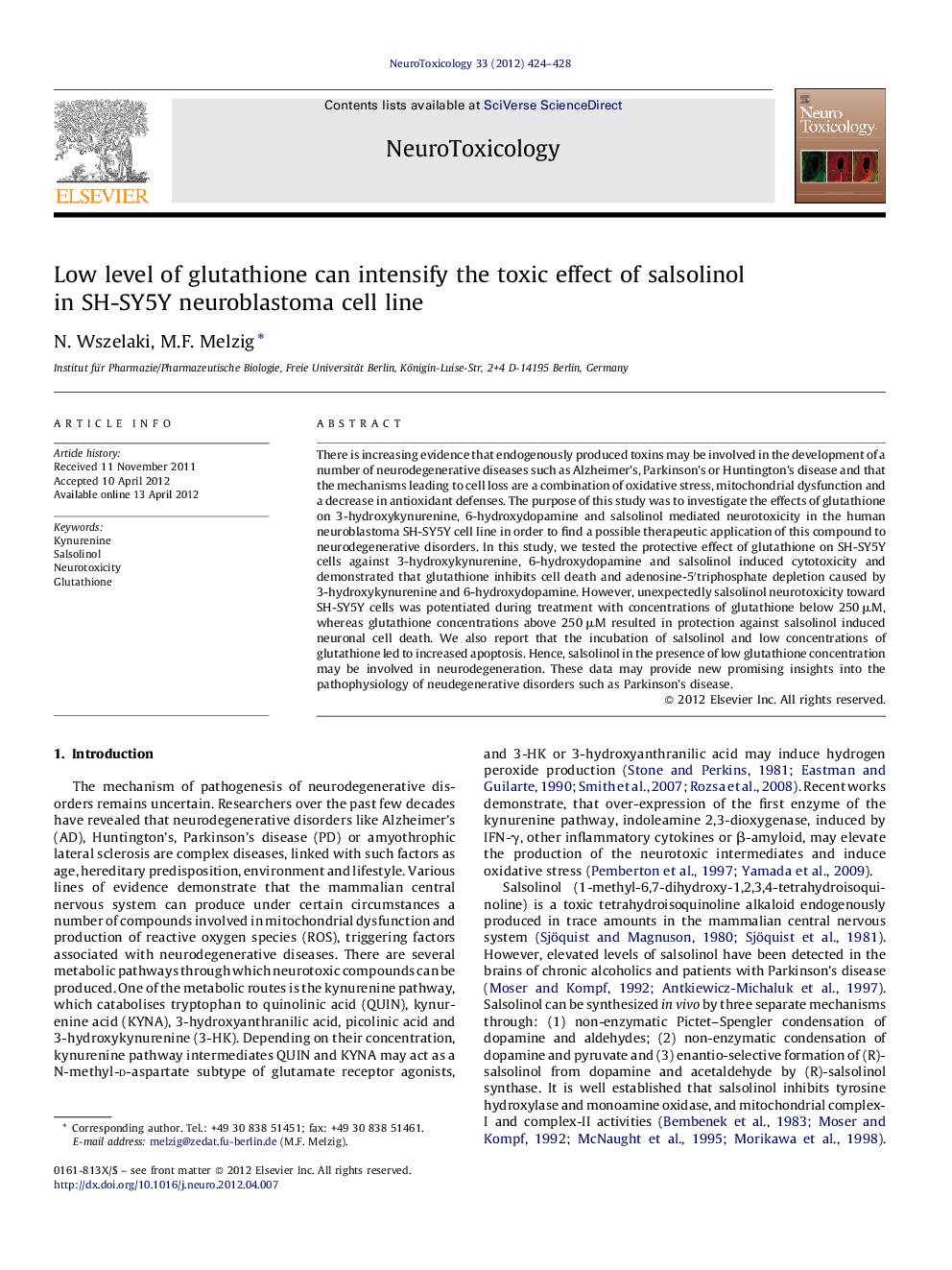| Article ID | Journal | Published Year | Pages | File Type |
|---|---|---|---|---|
| 5855327 | NeuroToxicology | 2012 | 5 Pages |
There is increasing evidence that endogenously produced toxins may be involved in the development of a number of neurodegenerative diseases such as Alzheimer's, Parkinson's or Huntington's disease and that the mechanisms leading to cell loss are a combination of oxidative stress, mitochondrial dysfunction and a decrease in antioxidant defenses. The purpose of this study was to investigate the effects of glutathione on 3-hydroxykynurenine, 6-hydroxydopamine and salsolinol mediated neurotoxicity in the human neuroblastoma SH-SY5Y cell line in order to find a possible therapeutic application of this compound to neurodegenerative disorders. In this study, we tested the protective effect of glutathione on SH-SY5Y cells against 3-hydroxykynurenine, 6-hydroxydopamine and salsolinol induced cytotoxicity and demonstrated that glutathione inhibits cell death and adenosine-5â²triphosphate depletion caused by 3-hydroxykynurenine and 6-hydroxydopamine. However, unexpectedly salsolinol neurotoxicity toward SH-SY5Y cells was potentiated during treatment with concentrations of glutathione below 250 μM, whereas glutathione concentrations above 250 μM resulted in protection against salsolinol induced neuronal cell death. We also report that the incubation of salsolinol and low concentrations of glutathione led to increased apoptosis. Hence, salsolinol in the presence of low glutathione concentration may be involved in neurodegeneration. These data may provide new promising insights into the pathophysiology of neudegenerative disorders such as Parkinson's disease.
⺠We examine the effect of external glutathione on SH-SY5Y cells against 3-hydroxykynurenine, 6-hydroxydopamine and salsolinol induced cytotoxicity. ⺠Administration of glutathione inhibits cell death and adenosine-50triphosphat depletion caused by 3-hydroxykynurenine and 6-hydroxydopamine. ⺠We report that low level of glutathione can intensify the toxic effect of salsolinol in SH-SY5Y neuroblastoma cell line mediated by the induction of apoptosis.
